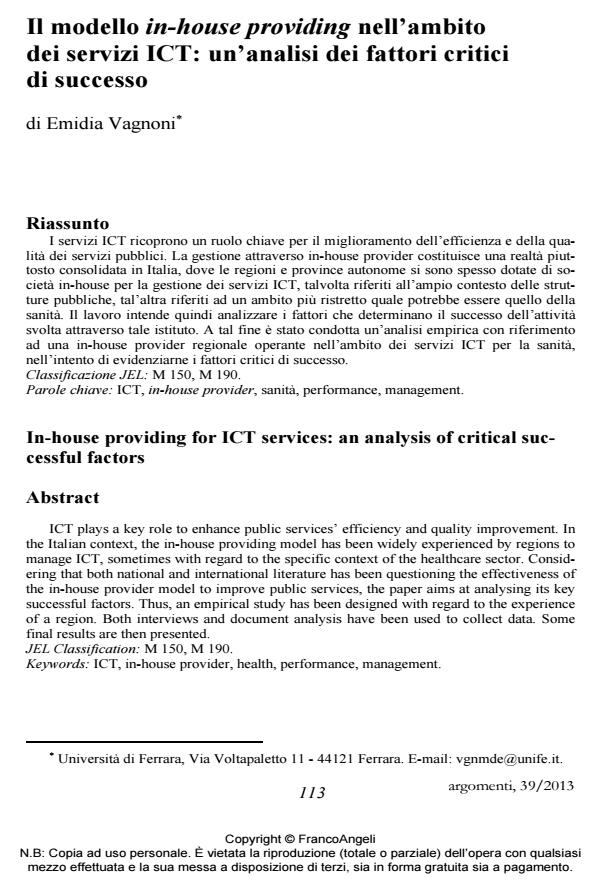In-house providing for ICT services: an analysis of critical successful factors
Journal title ARGOMENTI
Author/s Emidia Vagnoni
Publishing Year 2014 Issue 2013/39
Language Italian Pages 25 P. 113-137 File size 737 KB
DOI 10.3280/ARG2013-039005
DOI is like a bar code for intellectual property: to have more infomation
click here
Below, you can see the article first page
If you want to buy this article in PDF format, you can do it, following the instructions to buy download credits

FrancoAngeli is member of Publishers International Linking Association, Inc (PILA), a not-for-profit association which run the CrossRef service enabling links to and from online scholarly content.
ICT plays a key role to enhance public services’ efficiency and quality improvement. In the Italian context, the in-house providing model has been widely experienced by regions to manage ICT, sometimes with regard to the specific context of the healthcare sector. Considering that both national and international literature has been questioning the effectiveness of the in-house provider model to improve public services, the paper aims at analysing its key successful factors. Thus, an empirical study has been designed with regard to the experience of a region. Both interviews and document analysis have been used to collect data. Some final results are then presented.
Keywords: ICT, in-house provider, health, performance, management.
Jel codes: M 150, M 190.
Emidia Vagnoni, Il modello in-house providing nell’ambito dei servizi ICT: un’analisi dei fattori critici di successo in "ARGOMENTI" 39/2013, pp 113-137, DOI: 10.3280/ARG2013-039005